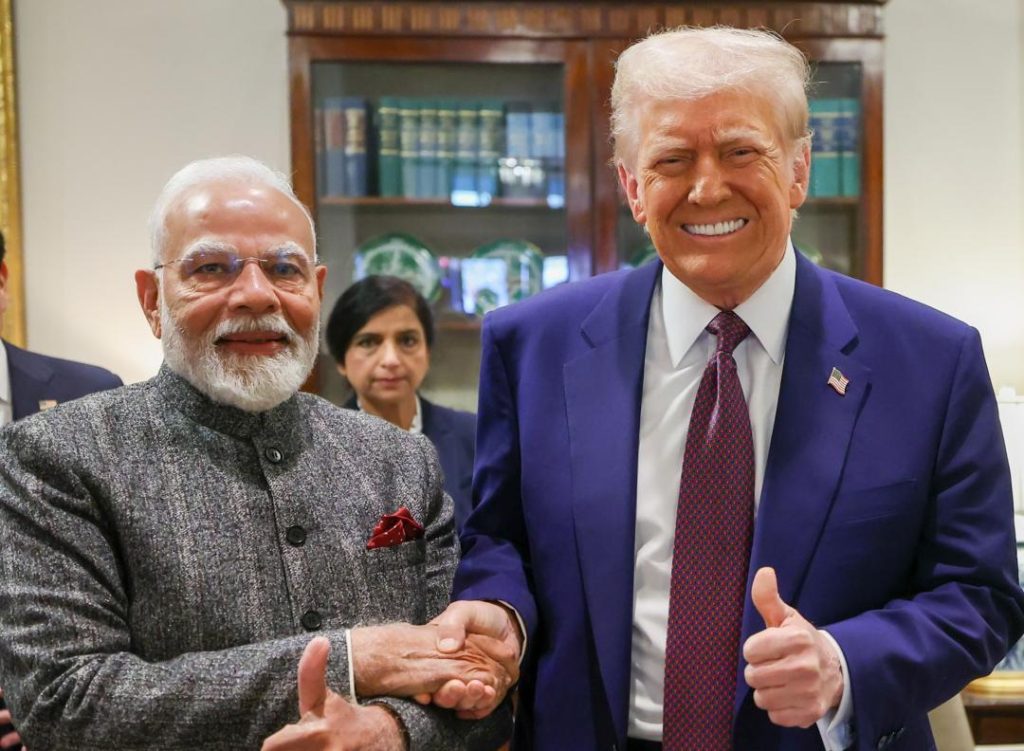
India to Show Data Proof to US to Avoid Reciprocal Tariffs: Report
The ongoing trade tensions between India and the United States have been escalating, with both countries imposing tariffs on each other’s goods. However, India is now preparing to counter US President Donald Trump’s plan to impose reciprocal tariffs by presenting data that shows most US imports attract duties of less than 10%, according to a report by Mint.
As per the report, the Commerce Ministry and the Ministry of External Affairs are compiling a detailed list of products and their import duties. This report will be presented in the next round of trade negotiations with the US. The aim is to demonstrate that India’s tariffs are not as high as those imposed by the US, thereby justifying the need for India to impose reciprocal tariffs.
The US has been pushing India to reduce its tariffs, particularly on goods such as Harley-Davidson motorcycles and almonds. The US has also been critical of India’s practice of imposing high tariffs on imported goods, citing it as a major obstacle to trade between the two countries.
However, India has been maintaining that its tariffs are necessary to protect its domestic industries and that they are not as high as those imposed by the US. The country has also been pointing out that the US is one of the largest beneficiaries of India’s trade policies, with many US companies operating in India and enjoying significant profits.
The report by Mint suggests that India’s data-based approach will help the country to make a strong case against the US’ demand for reciprocal tariffs. By presenting data that shows the average duty on US imports to be less than 10%, India can argue that its tariffs are not as high as those imposed by the US, and therefore, it is not necessary for the US to impose reciprocal tariffs.
Moreover, India can also use this data to demonstrate that its tariffs are not as protectionist as they are made out to be. By showing that the majority of US imports attract duties of less than 10%, India can argue that its tariffs are primarily aimed at protecting its domestic industries and not at restricting trade.
The data compilation exercise by the Commerce Ministry and the Ministry of External Affairs is likely to be a detailed one, covering a wide range of products and their corresponding import duties. The report is expected to provide a comprehensive picture of India’s tariffs and their impact on trade between the two countries.
The report by Mint has come at a time when trade tensions between India and the US are at an all-time high. The US has been imposing tariffs on Indian goods, including steel and aluminum, under the pretext of national security. India has retaliated by imposing tariffs on US goods such as almonds, apples, and Harley-Davidson motorcycles.
The ongoing trade tensions have had a significant impact on trade between the two countries. Indian exports to the US have declined by around 10% in the first half of the current fiscal year, while US exports to India have declined by around 15%.
In the midst of this trade war, India’s data-based approach could provide a much-needed breakthrough in the negotiations. By presenting facts and figures, India can make a strong case against the US’ demand for reciprocal tariffs and demonstrate that its tariffs are not as high as those imposed by the US.
In conclusion, India’s decision to present data proof to the US to avoid reciprocal tariffs is a welcome move. By highlighting the average duty on US imports to be less than 10%, India can argue that its tariffs are not as high as those imposed by the US, and therefore, it is not necessary for the US to impose reciprocal tariffs. The data compilation exercise is likely to provide a comprehensive picture of India’s tariffs and their impact on trade between the two countries.






